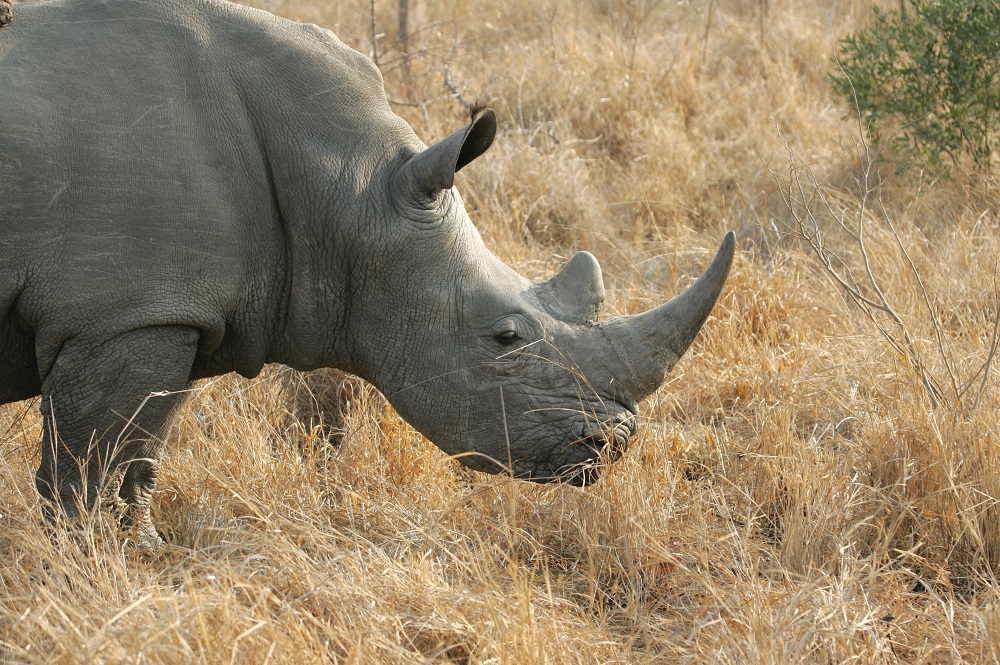On 13 February, South Africa’s Department for Environmental Affairs (DEA) announced the country’s poaching statistics for 2018: 769 rhinos were killed. This is lower than 2017 and therefore a positive sign but in reality, the numbers show two steps forward and one big step back.
The reduction in illegal killings of 259 from the country’s 2017 figure (1,028 rhinos poached) is welcome, and this is the first time in five years that poaching mortalities have dipped below the 1,000 mark. Nonetheless, this continues to be worryingly high, averaging two rhinos killed every single day.
2019 has continued to bring news of rhino poaching incidents in South Africa: if the 2018 trend were to continue for 2019, then 88 rhinos could have already been poached this year.
In addition, we must consider the regional breakdown of poaching incidents. These numbers paint a wider picture of just how many rhinos are being poached in specific areas, with more than half of all rhinos poached (54%) coming from Kruger National Park and increases in two provinces (Mpumalanga and Eastern Cape).
| Provinces and National Parks | 2017 | 2018 | Change |
| Kruger National Park | 504 | 421 | -16% |
| Marakele National Park | – | 1 | |
| Gauteng | 4 | 2 | -50% |
| Limpopo | 79 | 40 | -49% |
| Mpumalanga | 49 | 51 | +4% |
| North West | 96 | 65 | -32% |
| Eastern Cape | 12 | 19 | +58% |
| Free State | 38 | 16 | -57% |
| Northern Cape | 24 | 12 | -50% |
| Kwa-Zulu Natal | 222 | 142 | -36% |
| Western Cape | 0 | 0 | |
| Total | 1,028 | 769 | -25% |
Worryingly, Kruger has been a poaching hotspot for a number of years and much of the Government’s funding has been channelled here, yet 421 incidents still took place. Experience tells us that poaching will not stop overnight with more funding for security, but this is still too high a total.
This isn’t the only concern we have for rhinos at the moment. Despite poaching figures decreasing, it is the year-on-year impact of poaching on rhino populations that really matters, alongside the lasting effect of the drought on water and food sources.
Furthermore, slow progress in the courts and major corruption issues mean that prosecutions are not proceeding in a timely or effective manner, and poachers (and those higher up in criminal syndicates) are getting away with their illegal activities.
The DEA’s recent news also points to poachers turning their attention to another endangered species: elephants.
While up-to-date figures on rhino populations and poaching numbers for all countries are yet to be released, poachers may be increasing their range, getting to rhinos in other places that may have fewer resources to protect wildlife. Thankfully, Namibia has advised that fewer incidents of rhino poaching occurred in 2018 (57 rhinos poached), but there is certainly a lot more work to be done.
The decline in the number of poached rhinos may demonstrate that the anti-poaching work taking place is having an effect, or it may also demonstrate that with significantly fewer rhinos surviving in the wild, it is getting harder for poachers to locate their prey. More action is needed to stop the illegal trade and ensure rhinos have a positive future. This means supporting anti-poaching work, but also good overall management of rhino populations by ensuring high-quality biological management.
Unfortunately, any celebration of the reduced poaching figure for 2018 can only be very short lived. It is a silver lining but to an extremely dark cloud.
Read the Department of Environmental Affairs statement here.








